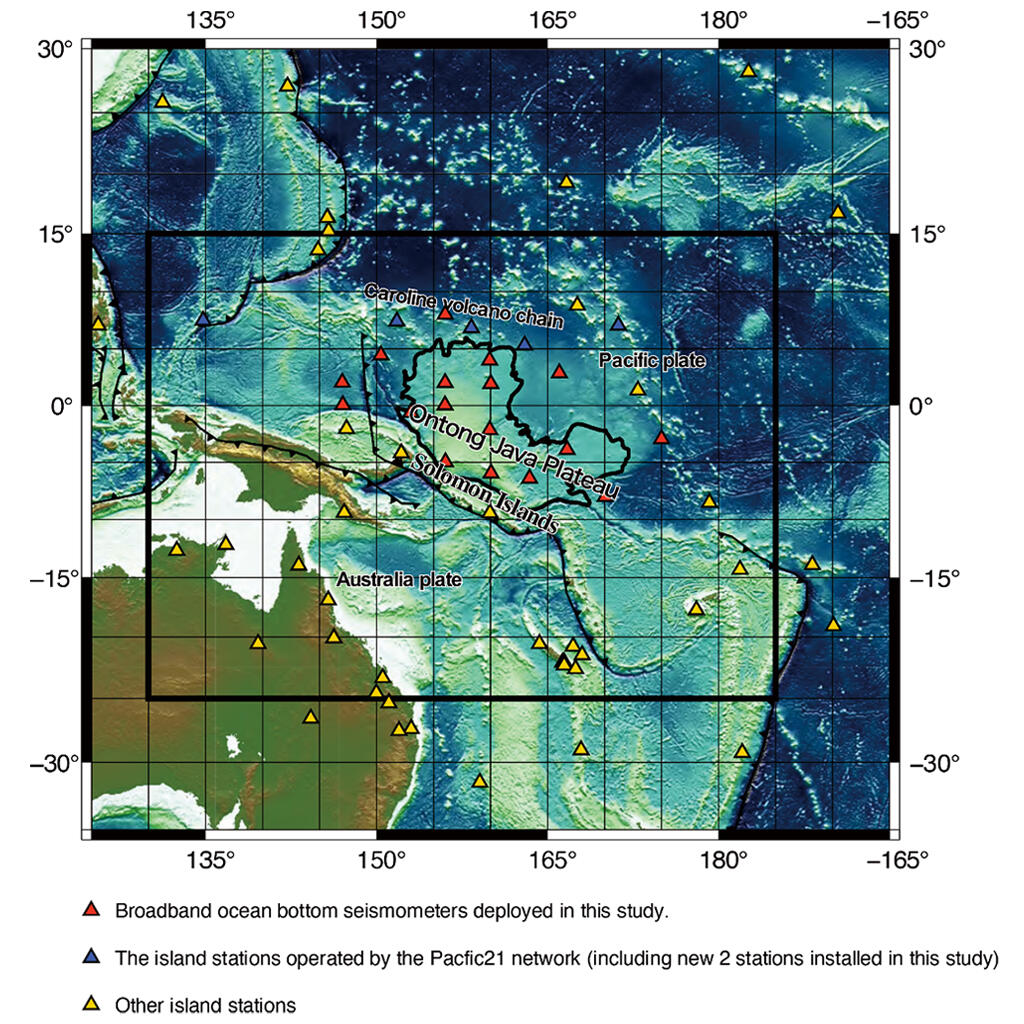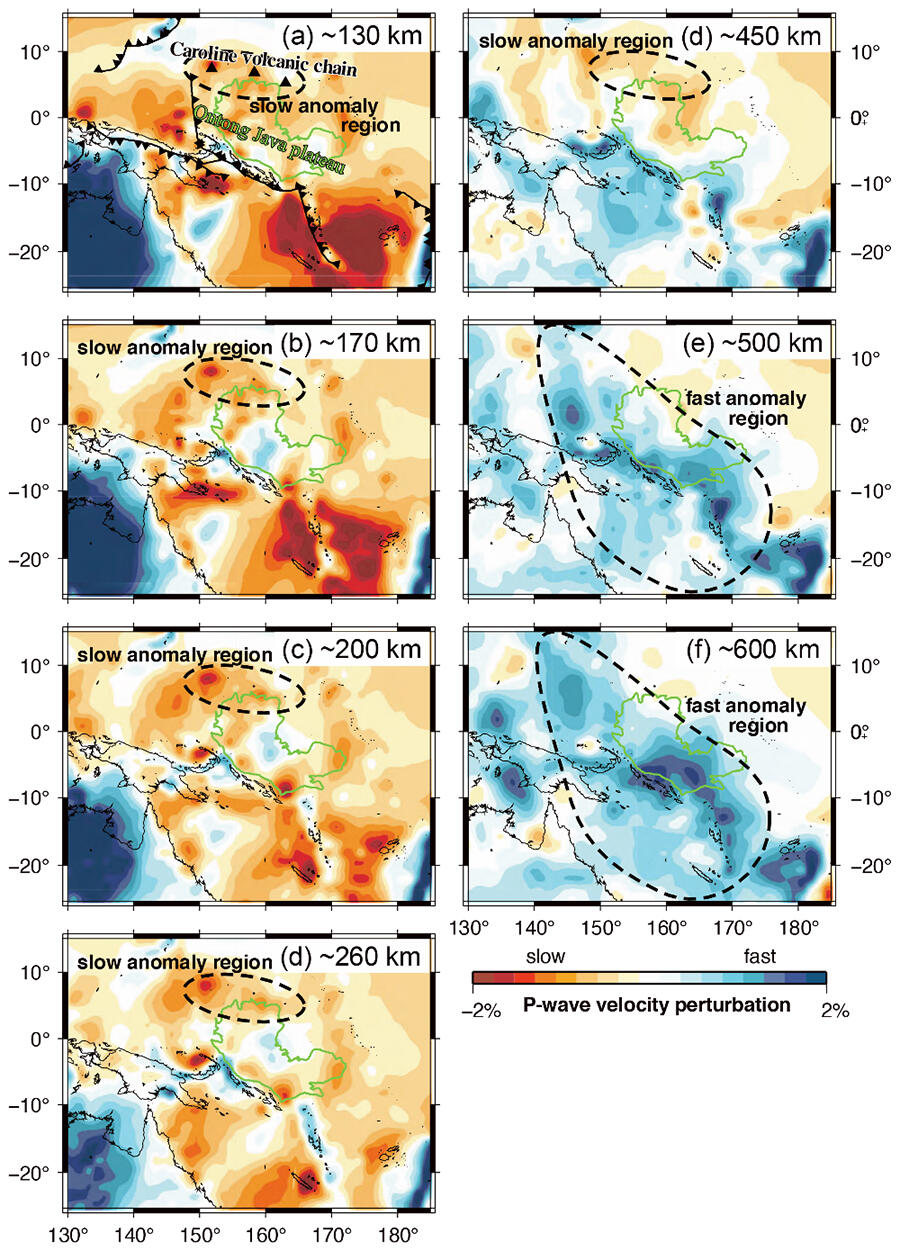In collaboration with the Earthquake Research Institute of the University of Tokyo and Kobe University, a research group led Masayuki Obayashi, Senior Researcher, Volcanoes and Earth's Interior Research Center, Research Institute for Marine Geodynamics, Japan Agency for Marine-Earth Science and Technology (JAMSTEC), clarified the mantle seismic velocity structure of the Ontong Java Plateau located in the equatorial region of the western Pacific Ocean and its surroundings. For the first time in the world, they discovered that a vast area with high seismic velocity exists at a depth of 500-600 km below the Ontong Java Plateau. According to Senior Researcher Obayashi, "How was the Ontong Java Plateau, the largest plateau on the surface of the earth that formed about 120 million years ago, formed in the center of the Pacific Ocean by the largest volcanic activity in history? What kind of effects has its movement across the earth's crust due to plate movement since then? We made an attempt to answer these questions by examining the structure inside the earth."
With these questions in mind, the research group constructed the Onton Java Seafloor Geophysical Observation Network, which consists of 23 state-of-the-art mobile broadband seismometers and two island seismic observations. From the end of 2014 to the beginning of 2017, the world's first broadband seismic observations were conducted directly above and around the Ontong Java Plateau, and attempted to elucidate the seismic structure of the mantle in and around the Ontong Java Plateau. At the plate boundary along the Solomon Islands southwest of the Ontong Java Plateau, the Australian plate is now subducting beneath the Pacific plate; however, between approximately 50 and 25 million years ago the Pacific plate was instead subducting.

Credit: JAMSTEC
The plate found in this study is considered to be the debris of the subducted Pacific plate. In addition, on the north side of the Ontong Java Plateau, there is a chain of volcanoes, known as the Caroline volcanic chain, lined up from east to west. Under the volcanic chain, it was found that a sheet of slow seismic anomalies indicating high temperatures spread from the edge of the wreckage of the lying Pacific plate. It was suggested that the ascending current from the lower mantle collided with the wreckage of the Pacific plate lying at a depth of 600 km and changed its shape into a sheet-like orientation.


This result shows the effect of the interaction between the subducting plate and the ascending mantle on surface tectonics, including volcanic activity. Senior Researcher Obayashi said, "Geological phenomena on the surface of the earth, such as earthquakes and volcanoes, are closely related to the movements inside the earth. We would like to investigate the current state of the deep sections of the earth and use it to predict future changes. We have 50 float-type seismometers deployed in the Pacific Ocean with international cooperation to observe earthquakes."
This article has been translated by JST with permission from The Science News Ltd.(https://sci-news.co.jp/). Unauthorized reproduction of the article and photographs is prohibited.




